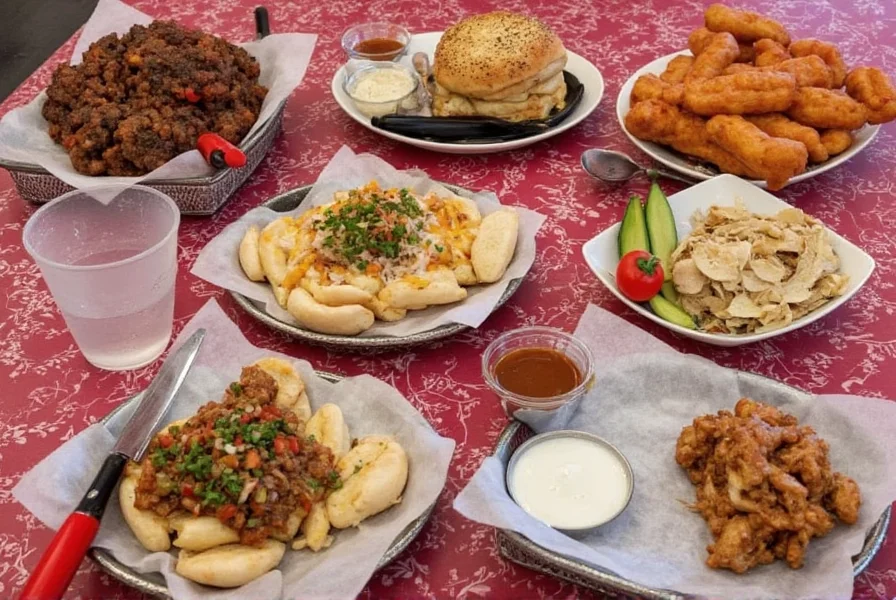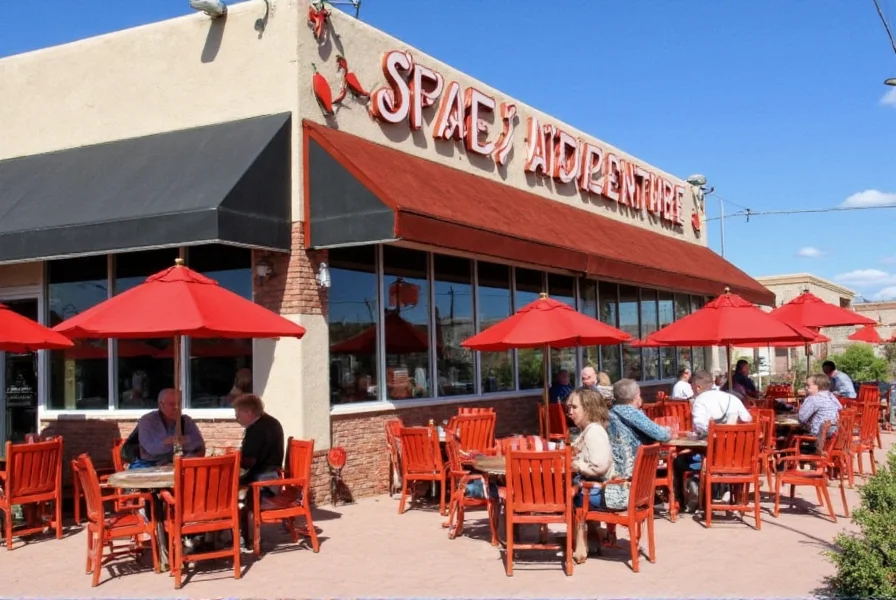Table of Contents
Introduction to Chilis in Las Cruces, NM
If you're a spice lover or just someone who enjoys a little heat with their meals, then Las Cruces, New Mexico is a must-visit destination. Known as the chili capital of the world, this city has a deep-rooted culture around chilis that's as rich and fiery as the peppers themselves. From local markets to farm stands, chilis are everywhere, and they play a central role in both the cuisine and the community. This guide draws on insights from the New Mexico Chile Association and local farmers to provide accurate, practical information.

Whether you're a seasoned chef or an amateur enthusiast, understanding the different types of chilis available in Las Cruces can elevate your cooking and deepen your appreciation for this vibrant region. In this guide, we'll walk you through everything from the most popular varieties to practical tips on growing, using, and even buying the best chilis in town.
Types of Chilis You Can Find
Las Cruces is home to a wide variety of chilis, each with its own unique flavor, heat level, and culinary use. Here's a quick overview of some of the most common ones:
| Chili Type | Heat Level (Scoville Units) | Flavor Profile | Common Uses |
|---|---|---|---|
| Anaheim Pepper | 500–2,500 | Mild, slightly sweet | Stuffed, roasted, used in sauces |
| Jalapeño | 2,500–8,000 | Earthy, grassy | Used in salsas, tacos, pickled |
| Serrano Pepper | 10,000–23,000 | Sharp, peppery | Great for salsas and hot sauces |
| Hatch Green Chile | 500–7,000 | Smoky, earthy | Used in traditional New Mexican dishes |
| Cayenne Pepper | 30,000–50,000 | Hot, pungent | Used in hot sauces and seasonings |
Each of these chilis has its own story and place in the local food scene. For example, the Hatch green chile is a staple in New Mexican cuisine and is often roasted and peeled before being added to dishes like enchiladas or chili con carne. The Anaheim pepper, on the other hand, is more commonly used in stuffing or roasting, offering a milder kick that still adds depth to any dish.
Practical Tips for Growing and Using Chilis
Whether you're a gardener looking to grow your own chilis or a cook wanting to experiment with new flavors, here are some practical tips to help you make the most of these spicy gems:
- Choose the Right Variety: Depending on your climate and taste preferences, select chilis that thrive in your area. Las Cruces has a dry, desert-like climate, making it ideal for growing many chili varieties.
- Plant in Warm Soil: Chili plants need warm soil to germinate. If you're starting from seeds, wait until after the last frost before planting.
- Water Consistently: While chilis don't need a lot of water, they do require consistent moisture, especially during the flowering and fruiting stages. Avoid overwatering to prevent root rot.
- Harvest at the Right Time: Pick chilis when they're fully colored and firm. Overripe chilis can become too hot or lose their flavor.
- Use Fresh or Dried: Fresh chilis add a bright, zesty flavor, while dried chilis offer a deeper, smokier taste. Use them according to the recipe or your personal preference.
When it comes to using chilis in your cooking, don't be afraid to experiment. Try roasting them for a smoky depth, or blending them into salsas and sauces for a bold kick. Even a small amount of chili can transform a dish from ordinary to extraordinary.
Buying Guide: Where to Find the Best Chilis in Las Cruces
If you're visiting Las Cruces, there are several places where you can find fresh, high-quality chilis. Here's a detailed guide to help you choose the best spots based on your needs:
Local Farmers Markets
One of the best ways to get fresh chilis is by visiting the local farmers markets. These markets are filled with produce from nearby farms, including a wide variety of chilis. Some of the top markets in Las Cruces include:
- The Las Cruces Farmers Market: Open every Saturday, this market features a variety of vendors selling fresh chilis, herbs, and other local produce. Visit early for the best selection.
- El Paso Street Market: Located just outside of Las Cruces, this market offers a mix of local and regional products, including chilis from surrounding areas. Great for finding rare varieties.

Specialty Stores
For those looking for specific types of chilis or chili-based products, specialty stores in Las Cruces are a great option. These stores often carry a wider selection and may even offer samples so you can try before you buy.
- The Chile Shop: This local store specializes in all things chili, from fresh pods to ground powders and sauces. It's a must-visit for any chili enthusiast and carries authentic New Mexico-grown chilis.
- Pueblo Foods: A popular spot for authentic New Mexican ingredients, Pueblo Foods offers a wide range of chilis, including the famous Hatch green chile. They also sell roasted and frozen chilis for year-round use.
Online Retailers
If you can't visit Las Cruces in person, you can still enjoy the flavors of the region by ordering chilis online. Many local growers and processors offer shipping services, allowing you to bring the taste of Las Cruces to your kitchen.
- Las Cruces Chile Company: This online retailer sells fresh and dried chilis directly from local farms, ensuring quality and freshness. They specialize in shipping within New Mexico for peak freshness.
- Chili Valley Co-op: A cooperative that connects consumers with local growers, offering a variety of chilis and related products for purchase online. They provide detailed growing region information for each product.
When buying chilis, look for ones that are firm, glossy, and free of blemishes. If you're purchasing dried chilis, check for a strong aroma and a uniform color. Whether you're shopping locally or online, the key is to find chilis that reflect the quality and tradition of Las Cruces.
Frequently Asked Questions About Chilis in Las Cruces
When is the best time to visit Las Cruces for fresh chilis?
The peak season for fresh green chilis in Las Cruces is late summer through early fall, typically August to October. This is when you'll find the freshest Hatch green chiles and other local varieties at their peak flavor. The famous Las Cruces Chile Festival usually takes place in September, offering a wonderful opportunity to experience chili culture firsthand.
What makes Las Cruces chilis different from others?
Las Cruces chilis benefit from the region's unique combination of high desert climate, abundant sunshine, and mineral-rich soil. The area's elevation (around 3,900 feet) and significant temperature variations between day and night contribute to the chilis' distinctive flavor profile—typically more complex with balanced heat and earthiness. The long history of chili farming in the region, dating back to indigenous cultivation, has also led to specialized growing techniques verified by the New Mexico State University Extension Service.
How should I store fresh chilis from Las Cruces?
Fresh green chilis can be stored in the refrigerator in a paper bag (not plastic) for up to two weeks. For longer storage, roasting and freezing is the traditional New Mexican method—roasted chilis can be frozen in airtight containers for 6-12 months while maintaining excellent flavor. Red chilis are often dried and strung into ristras (decorative pepper strings) which can last for months when stored in a cool, dry place.
What's the difference between Hatch chiles and Las Cruces chiles?
Hatch is a specific town in New Mexico's Rio Grande Valley, famous for its chile production. Las Cruces is another city in the state with its own chile-growing areas. While both produce New Mexico chiles, 'Hatch chile' typically refers to chiles grown in the Hatch Valley region. Las Cruces chiles are often fresher for local markets since they don't require long transport and share similar growing conditions, but slight soil differences can create unique flavor nuances.
Can I grow Las Cruces-style chilis in my own garden?
Yes, but success depends on your climate. If you have hot summers with plenty of sunshine and well-draining soil, you can grow similar varieties. The key New Mexico varieties like Big Jim, Joe E. Parker, and New Mexico No. 6 can be grown in many regions. The main challenges outside New Mexico are replicating the intense sunlight and the specific day-night temperature variations that contribute to the distinctive flavor. Consult local agricultural extensions for region-specific advice.
Are Las Cruces chilis always extremely hot?
No, this is a common misconception. New Mexico chilis, including those from Las Cruces, actually span a wide range of heat levels. The famous Hatch green chile, for example, is relatively mild (1,000–2,000 Scoville units) in its common varieties, comparable to a bell pepper with just a touch of heat. Many traditional New Mexican dishes use mild to medium varieties, with heat being something you add separately according to preference. Always check specific variety heat levels when purchasing.
Conclusion
Chilis in Las Cruces, NM, are more than just a food item—they're a cultural symbol, a culinary treasure, and a source of pride for the community. Whether you're growing your own, cooking with them, or simply enjoying the flavors, there's something special about the chilis that come from this region. As one of the most iconic foods of the American Southwest, chilis in Las Cruces continue to inspire and delight people from all walks of life.
So next time you're in Las Cruces, take a moment to explore the local markets, talk to the farmers, and experience the magic of chilis firsthand. You might just find a new favorite ingredient—or a new way to enjoy the spicy, smoky, and delicious world of chilis.










 浙公网安备
33010002000092号
浙公网安备
33010002000092号 浙B2-20120091-4
浙B2-20120091-4